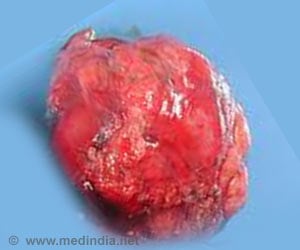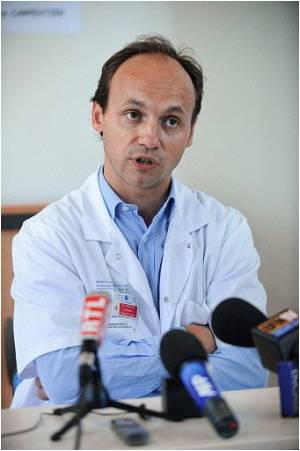Weeks of treatment with a re-purposed FDA-approved drug halted the growth of — and ultimately left no detectable trace of — brain tumor cells taken from adult human patients.

Encouraged by the new findings, described online Sept. 16 in the open-access journal Oncotarget, the Johns Hopkins researchers say they want to work quickly to design a clinical trial to bring what they learned in mice to humans with gliomas. Despite the growing understanding of IDH1 mutant gliomas, the development of effective therapies has proven challenging, they say.
"Usually in the lab, we're happy to see a drug slow down tumor growth," says Alexandra Borodovsky, a graduate student in the Cellular and Molecular Medicine Program at the Johns Hopkins University School of Medicine who performed the experiments. "We never expect tumors to regress, but that is exactly what happened here."
"This therapy has worked amazingly well in these mice," says study leader Gregory J. Riggins, M.D., Ph.D., a professor of neurosurgery and oncology at the Johns Hopkins University School of Medicine. "We have spoken with neurosurgeons here, and as soon as possible, we want to start discussing the parameters of a clinical trial to see if this will work in our patients as a follow-up to surgery."
The researchers caution that many treatments have cured cancers in mice, and then failed in humans.
Advertisement
Although methylation is a normal cellular process, when too many methyl groups glom onto the DNA, Riggins says, this can interfere with normal cell biology and eventually contribute to cancer formation and growth.
Advertisement
Riggins notes that one of the difficulties in developing treatments for IDH1 mutant brain cancers is finding a model in which to study them. Cell lines containing the IDH1 mutation are difficult to grow in the laboratory, for example. Borodovsky worked with Johns Hopkins neurosurgeons to obtain tumor cells from glioma patients likely to have IDH1 mutations and injected them under the skins of mice. She did this for months, before finally getting the tumor cells to grow.
Once the tumors grew, the researchers injected the mice with 5-azacytidine for 14 weeks and saw a dramatic reduction in growth and what appeared to be complete regression. Then they withdrew therapy. Seven weeks later, the tumors had not regrown. The researchers, however, said they do expect the tumors to regrow at some point, and are still monitoring the mice.
The type of tumor targeted by the researchers eventually progresses to a subtype of glioblastoma multiform — the deadliest form of brain cancer — known as progressive or secondary glioblastoma. They arise as a lower-grade glioma and are initially treated with surgery alone, but eventually they progress to the more lethal form of tumor. Survival is longer than with glioblastoma, but it is found in younger patients, those under the age of 50. While both types of tumor look the same at the end, they look very different at the molecular level, Riggins says, leading researchers to believe they may have a better chance at targeting the progressive tumors, which are more likely to have the IDH1 mutation.
Chan's team at Sloan-Kettering simultaneously published a paper in Oncotarget, along with Borodovsky and Riggins, which describes similar results in a different animal model using a similar drug. This is further evidence that the strategy is a sound one, Riggins says.
Source-Eurekalert















